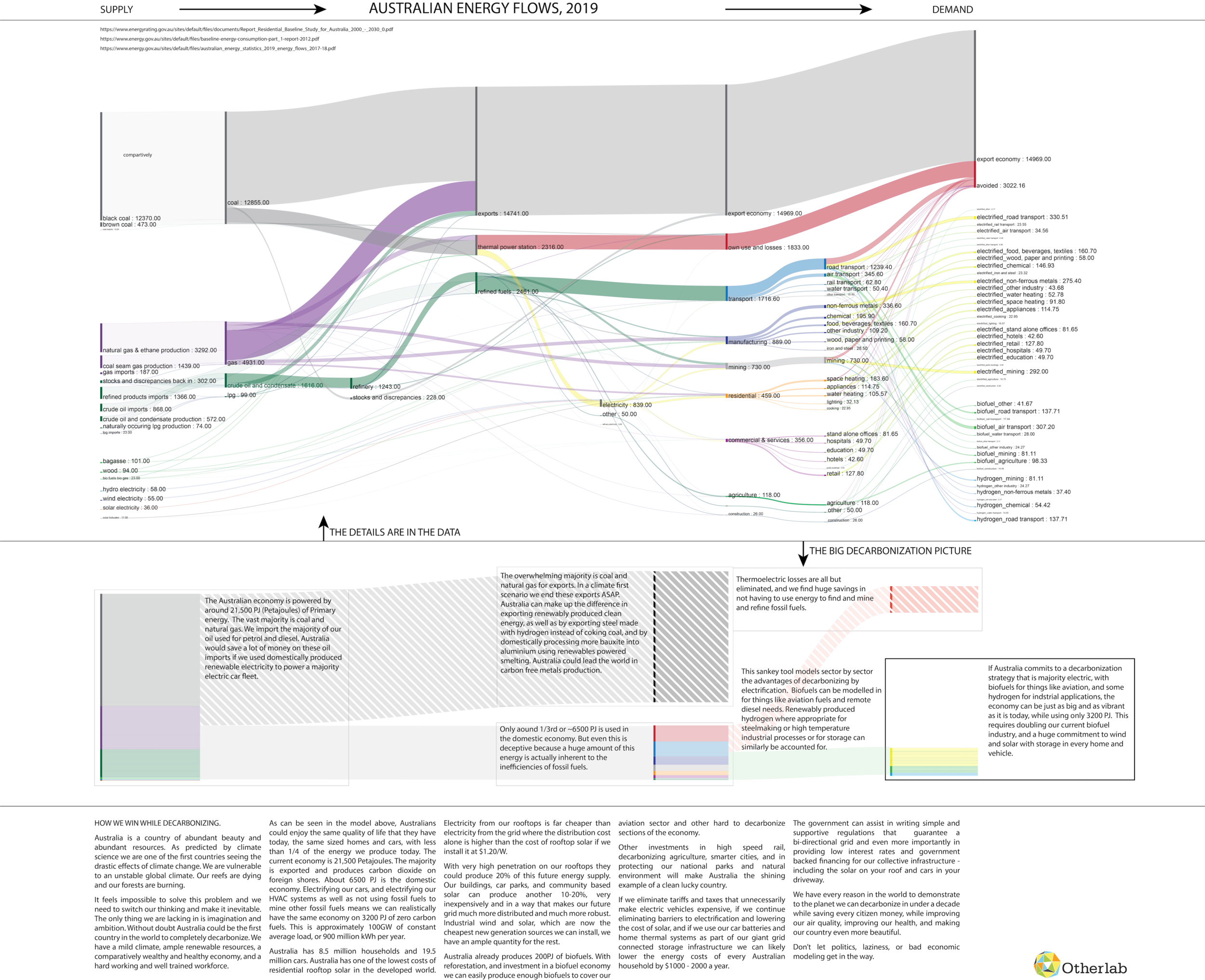The Path to Decarbonize Australia
Australia is a country of abundant beauty and abundant resources. As predicted by climate science, we are one of the first countries seeing the drastic effects of climate change. We are vulnerable to an unstable global climate. Our reefs are dying and our forests are burning.
For many, it feels like an impossible problem, but we need to switch our thinking: the only thing we are lacking in is imagination and ambition. Without a doubt, Australia could be the first country in the world to completely decarbonize. We have a mild climate, ample renewable resources, a comparatively wealthy and healthy economy, and a hard-working and well-trained workforce.
As seen in the model above, Australians could enjoy the same quality of life that they have today, and the same-sized homes and cars, with less than ¼ of the energy we produce today. The current economy is 21,500 Petajoules. The majority is exported and produces carbon dioxide on foreign shores. About 6500 PJ is the domestic economy. By electrifying our cars, electrifying our HVAC systems, and not using fossil fuels to mine other fossil fuels, we can realistically have the same economy on 3200 PJ of zero carbon fuels. This is approximately 100GW of constant average load, or 900 million kWh per year.
Australia has 8.5 million households and 19.5 million cars. Australia has one of the lowest costs of residential rooftop solar in the developed world. Electricity from our rooftops is far cheaper than electricity from the grid where the distribution cost alone is higher than the cost of rooftop solar if we install it at $1.20/W. With very high penetration on our rooftops, they could produce 20% of this future energy supply. Our buildings, car parks, and community-based solar can produce another 10–20%, very inexpensively and in a way that makes our future grid much more distributed and much more robust. Industrial wind and solar, which are now the cheapest new generation sources we can install, we have an ample quantity for the rest. Australia already produces 200PJ of biofuels. With reforestation, and investment in a biofuel economy, we can easily produce enough biofuels to cover our aviation sector and other hard-to-decarbonize sections of the economy.
Other investments in high speed rail, decarbonizing agriculture, smarter cities, and in protecting our national parks and natural environment will make Australia the shining example of a clean lucky country. If we eliminate tariffs and taxes that unnecessarily make electric vehicles expensive, if we continue eliminating barriers to electrification and lowering the cost of solar, and if we use our car batteries and home thermal systems as part of our giant grid-connected storage infrastructure, we can likely lower the energy costs of every Australian household by $1000–2000 a year.
The government can assist in writing simple and supportive regulations that guarantee a bi-directional grid, and even more importantly in providing low interest rates and government-backed financing for our collective infrastructure — including the solar on your roof and cars in your driveway.
We have every reason in the world to demonstrate to the rest of the planet that we can decarbonize in under a decade, while saving every citizen money and improving our air quality and our health, and making our country even more beautiful.
Don’t let politics, laziness, or bad economic modeling get in the way. It’s time for Australia to reap the investments it has made in a stable society, and show the rest of the world what the 21st century should look like. It’s time to be the tall poppy.

